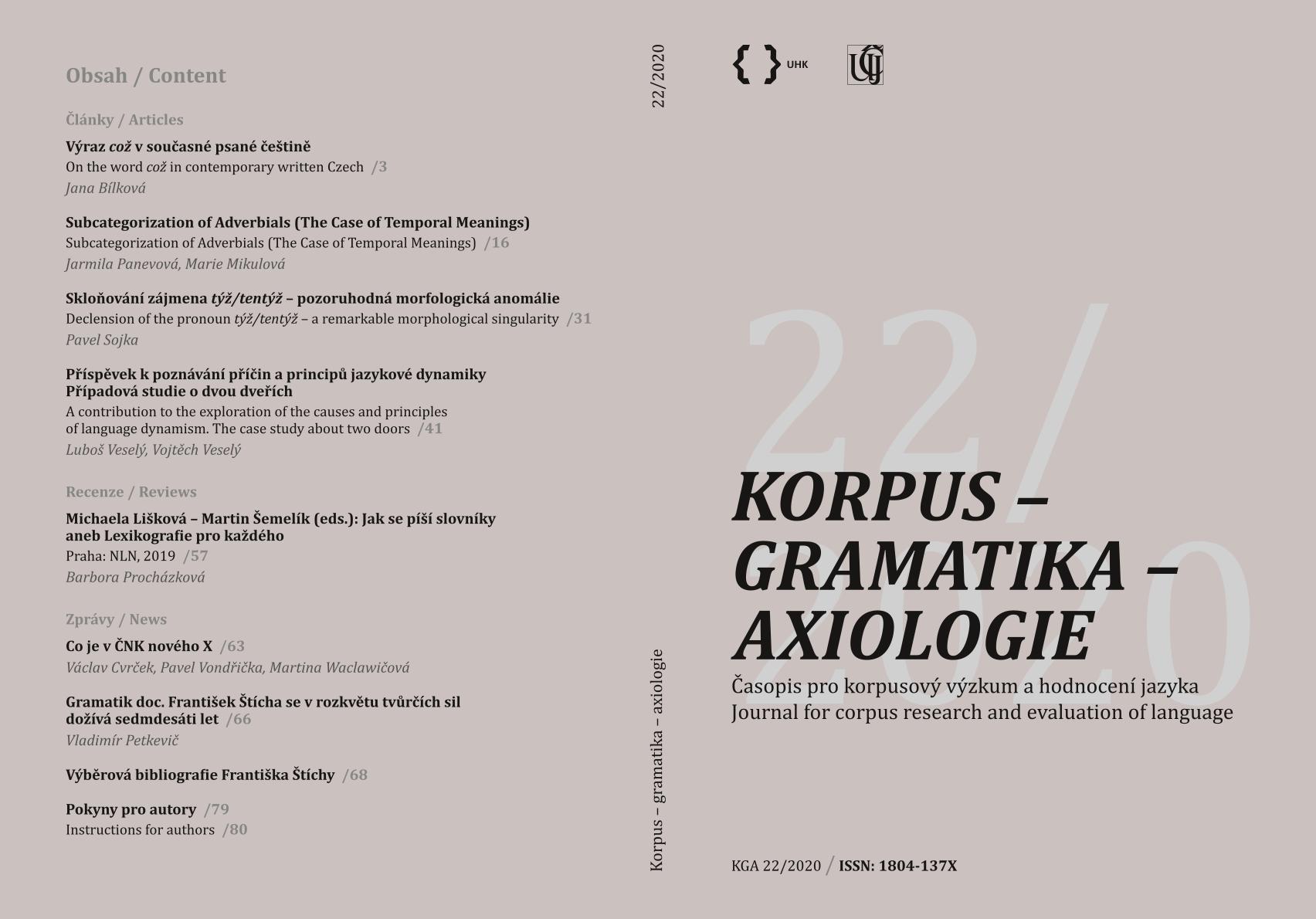Příspěvek k poznávání příčin a principů jazykové dynamiky
A contribution to the exploration of the causes and principles of language dynamism
The case study about two doors
Author(s): Luboš Veselý, Vojtěch VeselýSubject(s): Language and Literature Studies, Applied Linguistics, Computational linguistics, Descriptive linguistics
Published by: AV ČR - Akademie věd České republiky - Ústav pro jazyk český
Keywords: language dynamism; plurale tantum; basic numeral; set numeral; case
Summary/Abstract: The paper presents a corpus-based case study concerning quantification of the Czech plurale tantum dveře ‘door’ (but also of other plularia tantum). The study is a contribution to the research on language dynamism, i. e. dynamic changes in properties/behaviour of language units. According to both the authors’ intuition and the corpus data available, the plurale tantum dveře ‘door’ usually does not combine with the basic numeral dvě ‘two’ (hence dvoje dveře ‘two door’ is the only option) but quite commonly combines with basic numerals of higher numbers (tři ‘three’, čtyři ‘four’, etc.) which hereby comprise an alternative to set numerals (troje ‘three (sets)’, čtvery ‘four (sets)’, etc.). Therefore, dvě dveře ‘two doors’ is not common while tři dveře ‘three doors’, čtyři dveře ‘four doors’, etc., is common to some extent. As for other cases besides nominative and accusative, on the other hand, basic numerals of all numbers are common (dvou dveří ‘of two doors’, tří dveří ‘of three doors’, etc.). The following rationale is provided: the phrase dvě dveře ‘two doors’ is not acceptable because the numeral marks gender while the noun does not (as a result, the two forms are not compatible); the phrases dvou dveří ‘of two doors’, tři dveře ‘three doors’, tří dveří ‘of three doors’, etc., are also acceptable because neither the numerals nor the nouns mark gender. Other factors having an impact on the competition between basic and set numerals are also pointed out, especially: a) the nature of the denotate of the noun, b) the morphological type of the noun. The impact of various factors is examined via analysis of corpus data. It turns out that the (desired) ceteris paribus condition cannot be fully met as the respective factors interact with one another.
Journal: Korpus - gramatika - axiologie
- Issue Year: 2020
- Issue No: 22
- Page Range: 41-56
- Page Count: 16
- Language: Czech

